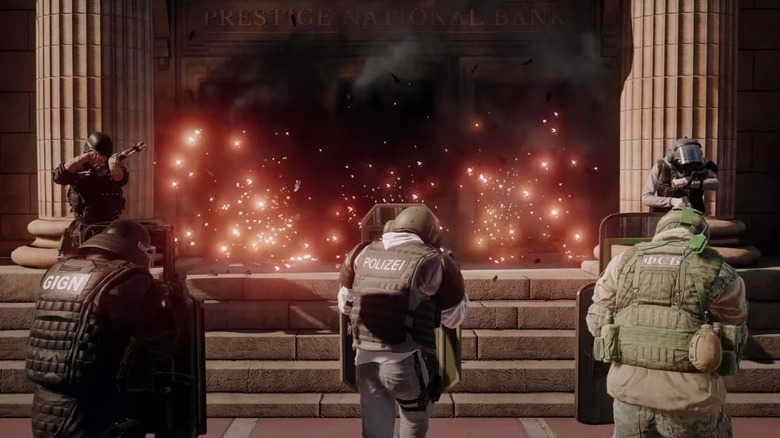Rainbow Six Siege: PS5 Vs PS4 - What's The Difference?
"Tom Clancy's Rainbow Six Siege" first launched on PC, PS4, and Xbox One in December 2015, and fans have been loving the game ever since. It has received many content updates and changes since its release, even prompting GameSpot to re-review it, with critic Mat Paget awarding the game a 10/10 in May 2020. When the next generation of consoles launched in November of last year, it seemed like a no-brainer that the game would receive upgrades for the next-gen systems.
Sure enough, on December 1, 2020, Ubisoft launched updates for the PlayStation 5 and Xbox Series X|S versions of the game, complete with the next-gen bells and whistles players would expect. Both versions were provided to owners of the last-gen versions for free, complete with cross-play and cross-progression. While it's obvious that the PlayStation 5 version outperforms the PlayStation 4 version, here is a complete breakdown of what exactly the differences are between the two.
Better resolution and framerate
The main difference between the PS5 version and the PS4 version of "Rainbow Six Siege" is the framerate and resolution of the game. According to Ubisoft's update notes, the PS5 version of the game offers two different modes: performance and resolution. Performance mode targets 120 FPS with 4K Dynamic Resolution Scaling, and Resolution mode targets 60 FPS with 4K resolution. Performance will run at upscaled 4K, with the resolution fluctuating in order to keep the game at roughly 120 FPS, and Resolution mode will stay at 4K resolution at all times.
According to a performance test by GamingBolt, the PS4 version runs at 1080p resolution with 60 FPS via VSync, which locks a game's framerate to a monitor or TV's refresh rate. So, "Rainbow Six Siege" can either run on the PS5 at the same frame rate as the PS4 with much higher resolutions or with double the frames with a better, but not maxed out, resolution.
DualSense capabilities
The next-gen update for "Rainbow Six Siege" also added DualSense controller capabilities, which are not available on the PS4 because the DualShock 4 is not capable of the same features. The features are "haptic feedback, adaptive triggers, and controller sound output." The controller sound output is simple enough: The DualSense has a speaker in it that plays different sounds from games.
Over on the PlayStation Blog, Tim Turi of Sony Interactive Entertainment gave a deeper dive on the implementation of the DualSense controller. He explained that the adaptive triggers are used to give each gun a different feeling when pulling the trigger. The R2 trigger will give a different level of resistance depending on the type of weapon being used, for a more immersive experience. As for the haptic feedback, he says, "Dynamic and immersive, haptic feedback reacts with the environment. Weapons, explosions, gadgets and so on will provide feedback directly in the player's hands."
Activity cards and quick loading
Another benefit of the PS5 and its powerful SSD is that games load much faster than they used to. As demonstrated by a video in the same PlayStation Blog post, the PS5 version of "Rainbow Six Siege" loads from the operator select screen into the map faster than the PS4 version by a significant amount. The example here isn't an online match, so the game might have to wait for others on last-gen consoles.
The other feature is Activity Cards on PS5, which appear on the dashboard for different games and load players into a specific activity very quickly. In the case of "Rainbow Six Siege," the cards include Ranked, Unranked, Newcomer, Quick Match, and Events, so players can instantly queue into a multiplayer match without needing to go through the game's main menu. While it doesn't seem like a big deal to be able to load and queue up faster, it can end up saving players a significant amount of time in the long run. It also allows players to feel like they can queue up a quick match of a game much easier.




